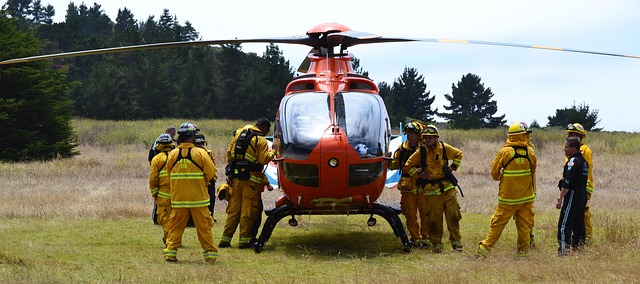Fire departments now have access to cost-effective solutions for enhancing their hazardous materials (hazmat) response capabilities through innovative budget hazmat training simulators. These simulators provide realistic alternatives to traditional methods, offering affordable emergency training props like low cost tank simulators and grant eligible 8120 training simulators for sale. By implementing these budget-friendly options, departments can conduct more frequent and diverse practice sessions, improving response times and outcomes during real-world emergencies while ensuring economical fire training.
Firefighters require diverse training tools to prepare them for real-world hazards, but acquiring specialized equipment can be costly. This article explores an innovative solution: budget-friendly Hazmat Training Simulators. We discuss the growing need for cost-effective aids, highlighting how these simulators offer realistic practice without breaking departments’ budgets. From practical implementation to grant opportunities, discover how this economical fire training unit can enhance your team’s readiness while remaining within financial constraints.
- Understanding the Need for Cost-Effective Training Aids
- Unlocking the Potential of Low-Cost Hazmat Training Simulators
- Practical Implementation and Grant Opportunities
Understanding the Need for Cost-Effective Training Aids

In today’s fiscal climate, fire departments and emergency response teams are continually seeking innovative ways to enhance their capabilities without breaking the bank. This is where cost-effective training aids come into play, specifically designed to meet the unique challenges of hazardous materials (hazmat) incidents. Traditional methods of hazmat training can be both expensive and resource-intensive, making it crucial to find alternatives that balance quality with affordability. Budget hazmat training simulators offer a promising solution by providing realistic scenarios without the hefty price tag.
By investing in affordable emergency training props like low cost tank simulators or 8120 training simulators for sale, departments can significantly reduce their training expenses while still gaining access to cutting-edge technology. These grant-eligible hazmat props not only ensure economical fire training but also enable more frequent and diverse practice sessions, ultimately improving response times and outcomes during real-world emergencies.
Unlocking the Potential of Low-Cost Hazmat Training Simulators

Firefighters need effective hazardous materials (Hazmat) training to handle incidents safely and efficiently. However, traditional Hazmat training can be expensive, requiring specialized equipment and facilities that are not always accessible to smaller fire departments. This is where low-cost Hazmat training simulators come into play, offering an economical alternative for emergency responders to gain crucial skills without breaking the bank. These simulators provide a safe environment to practice various scenarios, from identifying hazardous substances to donning personal protective equipment (PPE).
By investing in affordable emergency training props like the 8120 training simulator for sale or other grant-eligible Hazmat props, fire departments can significantly enhance their preparedness without overextending their budgets. Low-cost tank simulators, for instance, allow firefighters to familiarize themselves with different types of hazardous materials and safe decontamination procedures. This economical fire training unit ensures that first responders are well-equipped to handle potential Hazmat incidents, ultimately saving lives and minimizing damage in real-world emergency situations.
Practical Implementation and Grant Opportunities

Implementing practical emergency scenarios is a cornerstone of effective firefighter training. One innovative solution gaining traction is the use of low-cost, budget-friendly hazmat training simulators. These economical fire training units replicate real-world hazardous material incidents, allowing firefighters to hone their skills in a controlled environment. By purchasing an 8120 training simulator or similar models, departments can significantly reduce the expense associated with traditional high-fidelity simulation systems.
Grant opportunities further enhance the accessibility of these valuable training tools. Many grants are available from federal and state agencies designed to support fire safety initiatives, including the procurement of affordable emergency training props. Fire departments can leverage these funding sources to acquire low-cost tank simulators, expanding their capabilities without breaking the bank. This strategic approach not only improves training outcomes but also ensures that first responders are well-prepared to handle diverse hazards in their communities.






